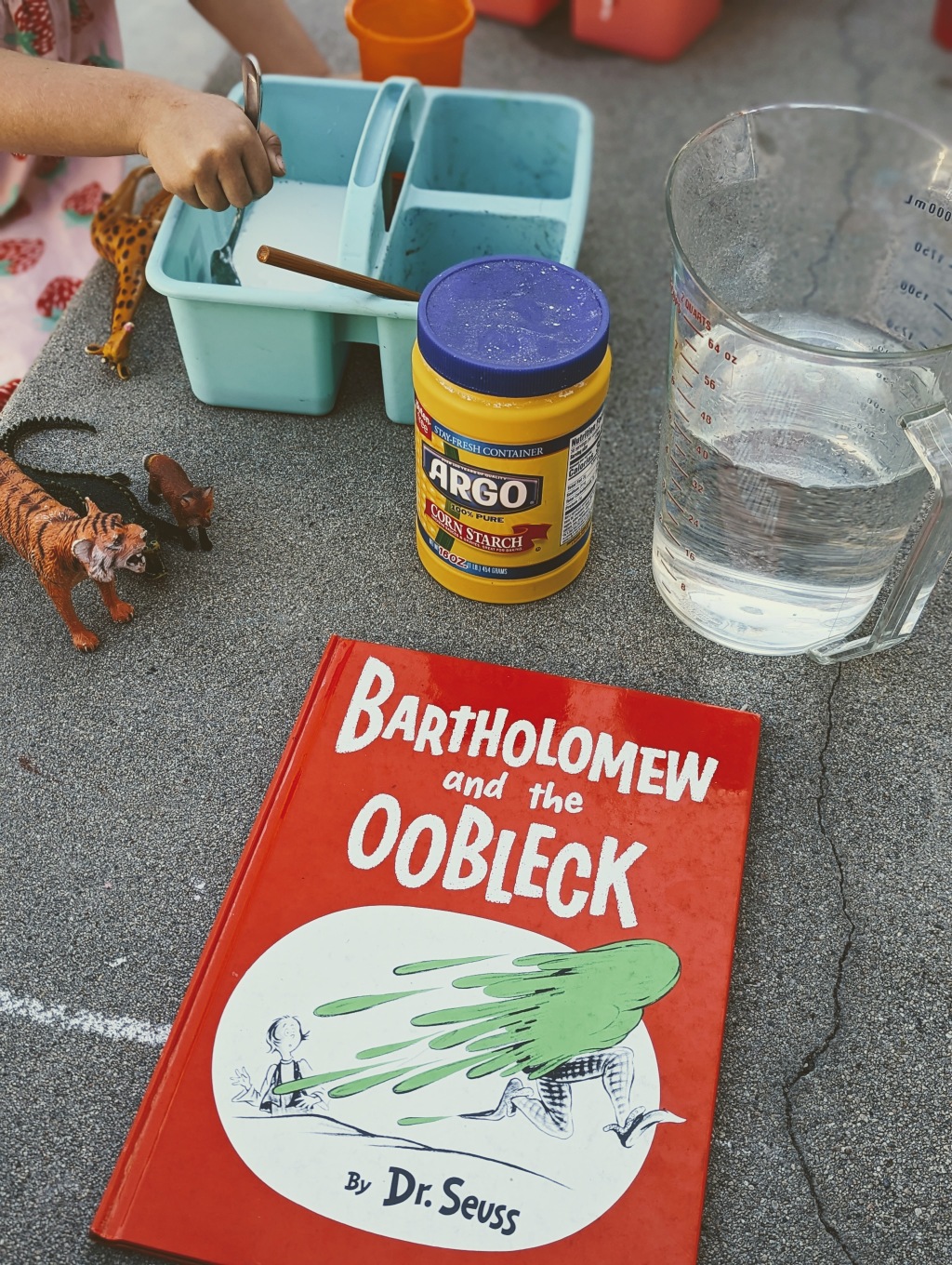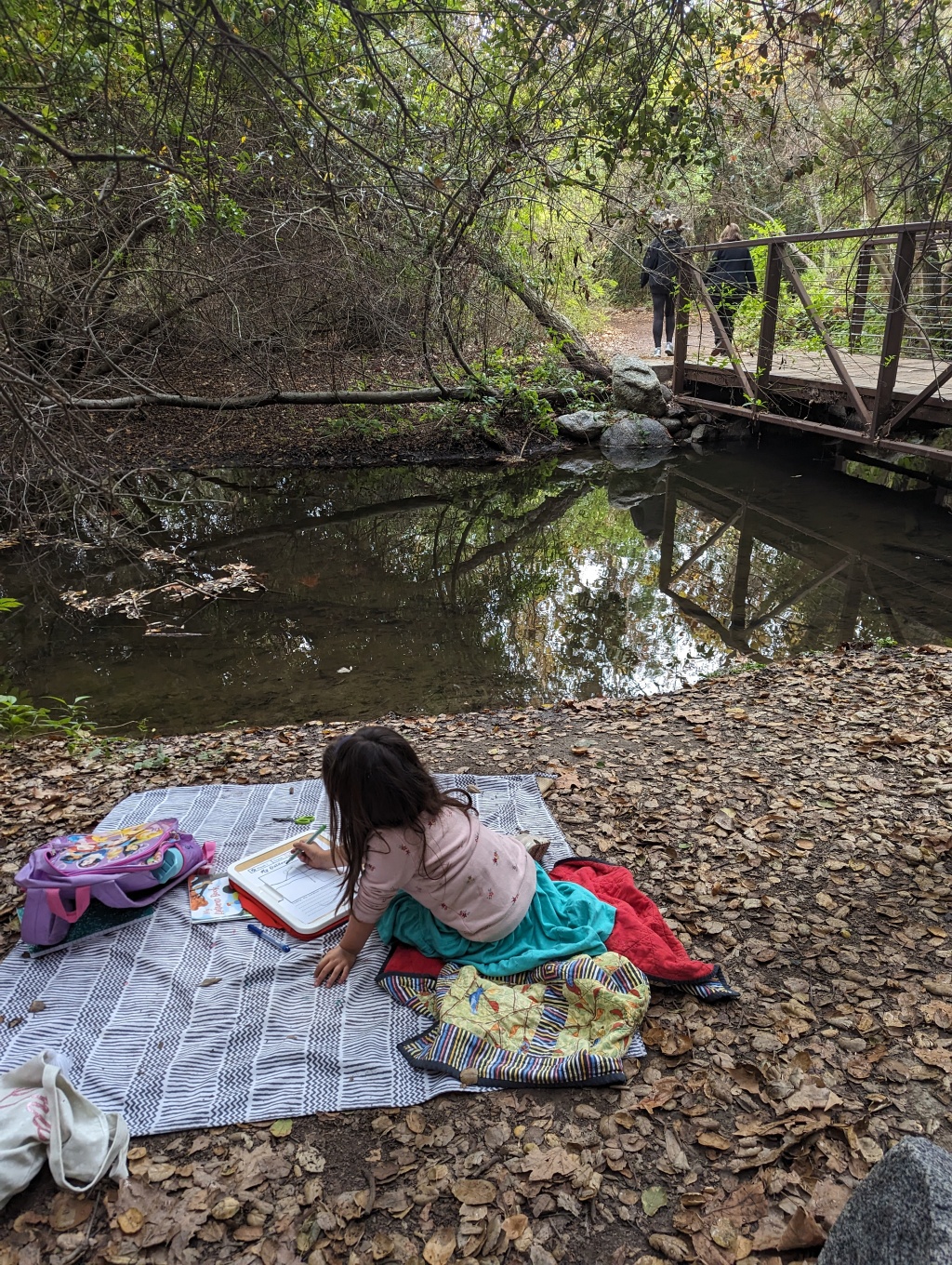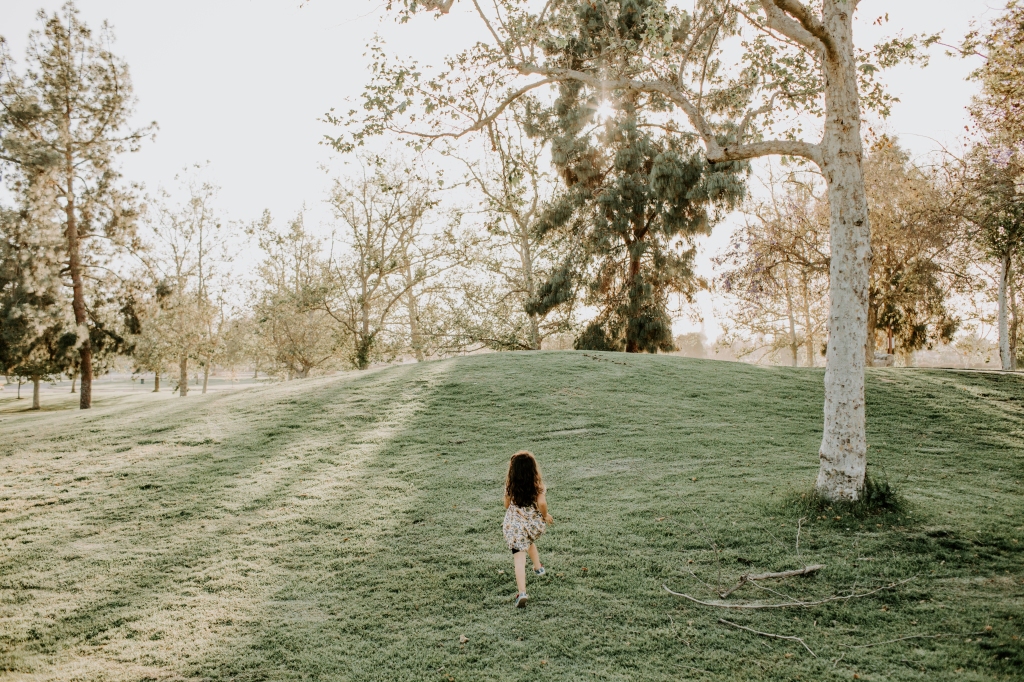Where science and language literacy meet
Hey there, fellow explorers and Dr. Seuss fans! Recently, I was given a copy of “Bartholomew and the Oobleck” by Dr. Seuss. I used to make oobleck with my 6th grade students every year when we studied the layers of the earth, I had kind of forgotten about it. Then when I was given this book, I was inspired to make it again with my littles. The story is a tale of “be careful what you wish for” and how an apology is incredibly powerful when we make mistakes. I plan to revisit the book again and look into these themes deeper with my older kiddo. But today, we focused on the gooey, slimy, kind of stiff substance called Oobleck. (Also a very fun word to say!). In the story, the oobleck takes over the town and is nearly impossible to clean up (Don’t worry, real like oobleck is very easy to clean up! Rinse away with water, easy peasy)
This peculiar substance, named after the gooey green precipitation in the book, led us on a fascinating journey through science, play, and discovery. If you’re eager to bring a bit of magic and learning into your home, follow along as we share our oobleck adventure and how you can do the same!
What is Oobleck?

Before we dive into our experiment, let’s shed some light on what oobleck is. Oobleck is a non-Newtonian fluid, which means it doesn’t follow Newton’s law of viscosity. Simply put, it acts like a liquid when at rest and a solid when pressure is applied. This curious behavior makes oobleck an excellent tool for inquiry and exploration. Try this: Scoop the oobleck into a ball then try to hold it in the palm of your hand.
Making Oobleck: A Simple Recipe

Making oobleck is surprisingly simple, requiring only two household ingredients:
- Water
- Cornstarch
We followed a straightforward recipe: mix about 2 parts cornstarch to 1 part water until you get a consistency that’s hard to describe but incredible to feel. The process itself was a mess (we did this outside…but also a great bathtub activity!). We couldn’t help but marvel at the substance’s transformation as we continued to mix and play.
Exploring Oobleck: Let Them Play

The real fun began when we started exploring our oobleck’s properties. Here’s where the story of Bartholomew and his oobleck-inspired challenges came to life. We poked, prodded, squeezed, and even tried to run our fingers through it, each action prompting giggles and astonishment. We pulled out the plastic animals and watched them sink, made them “run” across the sruface, and gave them oobleck baths. Then they tried to clean up the animals just like in the story, this proved challenging!
Ask them Questions
To turn this playful experiment into a learning adventure, consider asking your kids these inquiry-based questions:
- What happens when you slowly dip your hand into the oobleck? How about when you try to grab it quickly?
- Can you form a solid ball of oobleck by rolling it in your hands? What happens when you stop rolling it?
- Why do you think the oobleck acts differently when you apply pressure versus when you let it sit?
- How does oobleck compare to other liquids and solids you know? Can you think of any other substances that behave this way?
- If Bartholomew had to clean up oobleck, how do you think he could do it based on its properties?
These questions are just the beginning. Encourage your children to come up with their own questions and hypotheses about oobleck.

Our oobleck experiment was more than just a fun activity; it was a journey into the heart of curiosity and the scientific method. By engaging with a simple substance like oobleck, children can learn critical thinking, observation, and even the basics of physics without even realizing they’re “learning.”
So, why not make some oobleck with your kids this week? It’s a perfect way to combine the imaginative storytelling of Dr. Seuss with hands-on scientific exploration. Share your oobleck adventures and any additional questions your little scientists come up with in the comments below!
Cheers,
Lauren





Leave a comment